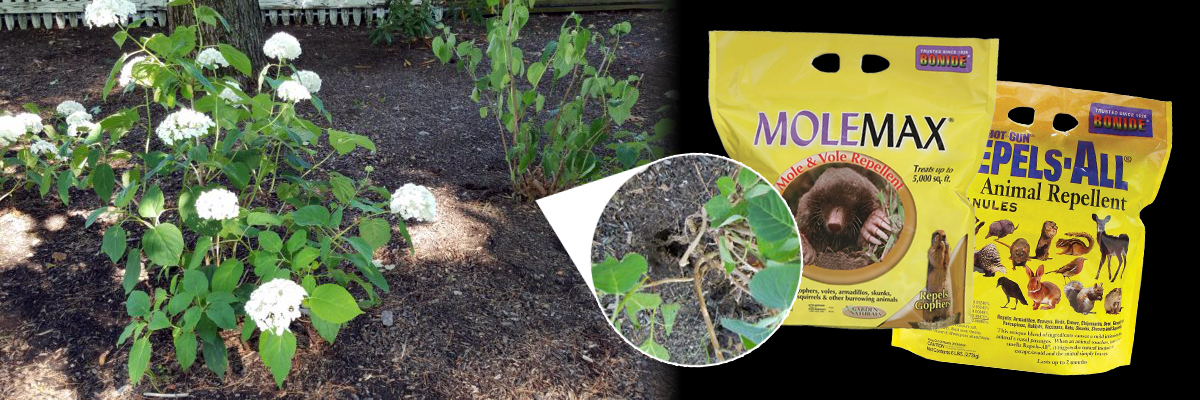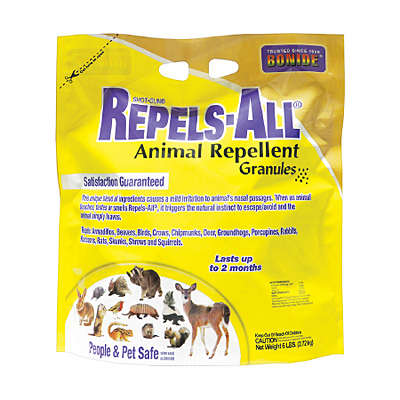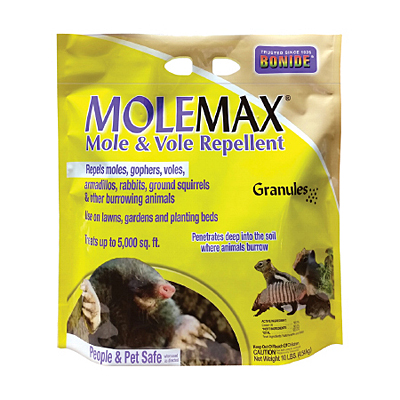
Nasty Little Voles!
By Kerry Ann Mendez
My blood pressure soared the other day when I noticed one of my Hydrangea 'Incrediball' had suddenly wilted. The adjacent 'Incrediball' seemed fine. As I drew closer to investigate, I noticed a small hole at the base of the shrub. Upon closer inspection, I discovered a tunnel and cavity underneath the shrub, where roots used to be. GRRRR! The Hydrangea had fallen prey to a vole, a hungry field mouse, running its own "demolition derby".
It's time to launch a counter-attack and I'm not wasting any time.
Voles are rampant breeders, producing 5-10 litters per year with 3-6 young per litter. Voles reproduce throughout the entire year, with peak rates in the spring and summer.
I could use poison baits but I worry that an unintended victim (i.e. a cat or hawk) would devour the dead mouse and be poisoned as well. Thankfully, there are more eco-friendly ways to win the war against voles. For example:

VoleX
This bait's active ingredients are corn gluten meal and sodium chloride. It kills by causing dehydration. When used as directed, it is safe around pets and livestock.

Repels-All
This is an organic repellent, it doesn�t kill targeted critters. A combination of putrescent whole egg solids, cloves and garlic oil causes a mild irritation to the animal's nasal passages and sends them seeking alternative living arrangements.

MoleMax Mole & Vole Repellent
The active ingredient is all natural, poison free castor oil. Castor oil-based repellents penetrate the ground and give ground vegetation an odor and taste that voles (and other critters) dislike, driving them to find food elsewhere.
Estabrook's carries a wide assortment of animal repellents. We look forward to helping you find the best solution.